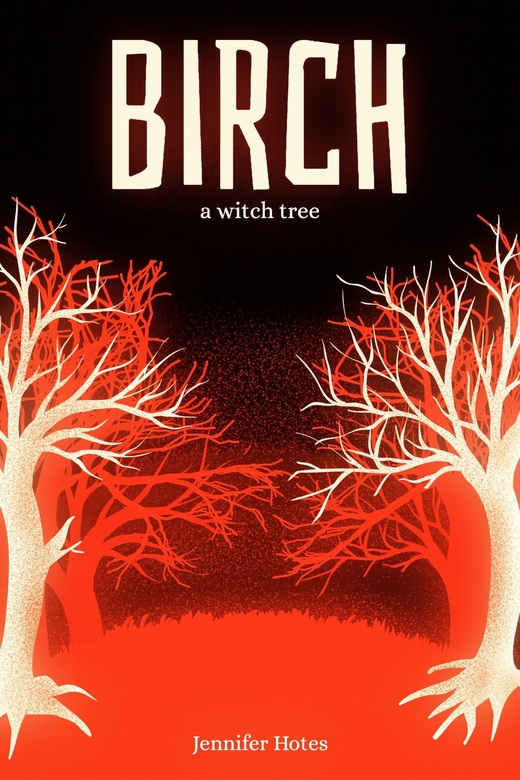
An introspective, supernatural narrative about coping with grief and loss, Jennifer Hotes’ Birch: A Witch Tree is the dramatic first title in a planned series about helping suspected witches achieve salvation after death.
Megan Ann Davenport is an up-and-coming painter living in Seattle, right on the brink of huge success and recognition for her prodigious talents. Not everything in her life is great, however: Megan left home at age seventeen to escape her conservative family, who don’t know that she’s a lesbian with a girlfriend named Charlie. When Megan’s preacher father unexpectedly dies of a heart attack, she’ll finally have to go home and confront her past – a background that includes the mysterious tree that her father was chopping when he passed away, a notorious local legend with a violent history.
The protected birch on the Davenport property is rumored to be a witch tree that traps the soul of a woman named Sarah James, a widow who sold medicinal herbs to survive, and who was suspected of murder and witchcraft. A preacher cursed her to unrest after death, so she can never join the rest of her family in the afterlife. Megan has been seeing visions and having dreams about promising to free Sarah for a long time, which only increases with her proximity to home. She’s also been completing artwork in her sleep: beautiful paintings often containing images of a certain tree and a familiar woman.
Hotes’ novel is a slow-burn tale, more of a character study about the difficulties of being a woman than a tense horror narrative, but that is also where the book excels, showing how past discrimination is still with us. Megan and Sarah may seem different on the surface, but the two women do have a deep connection across time and space. Sarah was persecuted because she was too independent, attempting to make it on her own after her husband’s death, rather than relying on a man. In a similar fashion, Megan had to leave home due to small-town discrimination.
Megan doesn’t believe her family will accept her for being gay, despite her comfortable life and outward success in the art world. She remains closeted at home, which complicates her grieving process and her relationship with Charlie, who feels like Megan is hiding an essential part of herself from her family, exemplifying how this novel excels at contemporary character study as much as a storyline about witchcraft. Author Hotes treats these complicated relationship issues with great nuance and empathy, driving home how being your genuine self isn’t always easy with those who raised you.
The novel is also an astute commentary on the stakes and nature of striving for an art career. The paintings that Megan doesn’t remember completing are some of her best work, but she’s sacrificing her physical and mental health staying up all night to finish them. By maintaining her connection with Sarah and continuing to paint, Megan also isn’t fulfilling her bargain to help Sarah escape her eternal prison. Eventually, our protagonist will have to make some tough decisions, about her sexuality, her art, and her family.
While the ultimate ending of Birch: A Witch Tree is something of an anti-climax, the novel is worth reading for Hotes’ excellent, compelling characters, and a story that is at once timely and timeless.
Book Links
STAR RATING
Design
Content
Editing
Get an Editorial Review | Get Amazon Sales & Reviews | Get Edited | Get Beta Readers | Enter the SPR Book Awards | Other Marketing Services























Leave A Comment